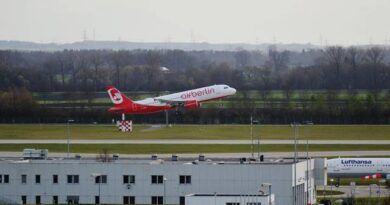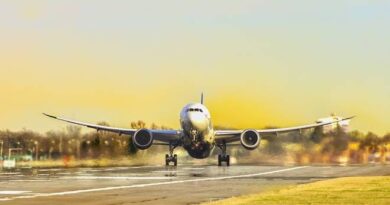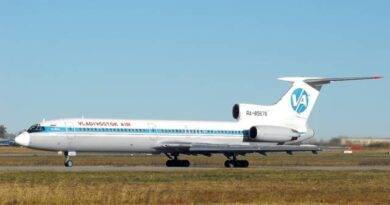Digitization in Aircraft: Potential Risks and Benefits
The aviation industry has always been at the forefront of technological advancements, and the latest trend of digitization is no exception. Digitization in aircraft refers to the integration of digital technologies into various aspects of aviation, ranging from flight operations to passenger services. While digitization offers numerous benefits, such as improved efficiency, safety, and passenger experience, it also comes with potential risks that need to be carefully addressed. In this article, we will explore the potential risks and benefits of digitization in aircraft, and how the aviation industry can navigate this new era of technological transformation.
Benefits of Digitization in Aircraft
Enhanced Efficiency
Digitization in aircraft can greatly enhance operational efficiency. For instance, digital flight planning and navigation systems can optimize flight routes, reducing fuel consumption and emissions, and minimizing delays. Digital maintenance and inventory management systems can also streamline maintenance processes, ensuring that aircraft are in optimal condition and minimizing downtime. Additionally, digitized data can provide valuable insights for airlines to optimize their operations and make data-driven decisions, leading to cost savings and increased productivity.
Improved Safety
Safety is a top priority in aviation, and digitization has the potential to significantly enhance safety measures. For example, digital sensors and systems can monitor various aspects of aircraft performance, such as engine health, structural integrity, and weather conditions, in real-time, allowing for proactive maintenance and safety measures. Digital communication systems can also improve communication between pilots, air traffic controllers, and ground staff, reducing the risk of miscommunication and human error. Furthermore, digital technologies can enable better situational awareness, helping pilots and airlines make informed decisions during emergencies or adverse conditions.
Enhanced Passenger Experience
Digitization can greatly enhance the passenger experience by providing a seamless and personalized journey. For example, digitized booking systems can offer customized travel options, such as preferred seats, meals, and services, based on passenger preferences and profiles. Digital check-in and boarding processes can also simplify and expedite the passenger journey, reducing wait times and improving overall satisfaction. In-flight entertainment systems, connected cabin technologies, and onboard Wi-Fi can also provide passengers with a range of digital services, such as personalized content, real-time updates, and connectivity, enhancing their travel experience.
Environmental Benefits
Digitization in aircraft can also have positive environmental impacts. For instance, optimized flight routes and improved maintenance processes can lead to reduced fuel consumption and emissions, contributing to the aviation industry’s sustainability efforts. Digital technologies can also enable more efficient ground operations, such as optimized baggage handling and ground transportation, leading to reduced energy consumption and environmental footprint. Additionally, digitization can enable better monitoring and management of waste, water, and other resources, promoting sustainability in aviation.
Risks of Digitization in Aircraft
Cybersecurity Risks
One of the major risks of digitization in aircraft is the potential for cybersecurity breaches. As aircraft become more connected and reliant on digital systems, they become vulnerable to cyber threats, such as hacking, malware, and data breaches. Cybersecurity risks can lead to serious consequences, including compromising flight safety, theft of sensitive data, and disruption of operations. Therefore, robust cybersecurity measures, including firewalls, encryption, authentication, and regular vulnerability assessments, need to be in place to protect aircraft systems and data from cyber threats.
Reliance on Technology
Another risk of digitization in aircraft is the increased reliance on technology. While digital systems can greatly enhance operational efficiency and safety, they also create a dependency on technology. In the event of a system failure or malfunction, pilots and operators may face challenges in managing the situation manually, leading to potential safety risks. Therefore, adequate training, skills, and backup systems need to be in place to ensure that pilots and operators can effectively manage situations when technology fails.
References:
International Air Transport Association (IATA). (2020). The Future of Airline Industry: Embracing Digitization. Retrieved from https://www.iata.org/en/policy/economic-performance/digital-transformation/
United Nations International Civil Aviation Organization (ICAO). (2017). Aviation Benefits Report 2017. Retrieved from https://www.icao.int/sustainability/Documents/ICAO_Aviation_Benefits_Report_2017.pdf
Boeing. (2018). The Connected Airplane: Risks and Opportunities of Technology. Retrieved from https://www.boeing.com/resources/boeingdotcom/innovation/themes/media/docs/2018ConnectedAirplane.pdf
Iqbal, S., & Yousef, N. (2019). Cybersecurity Risks in Aviation Industry: A Review. Journal of Transportation Security, 12(2), 39-55.
European Aviation Safety Agency (EASA). (2018). Safety Assessment of New Technologies and Trends in Aviation. Retrieved from https://www.easa.europa.eu/sites/default/files/dfu/SSR2018_safety_assessment_new_technologies_trends_in_aviation.pdf
Fawaz, R. A., Khadra, M., & Al-Hemyari, G. (2020). The Pros and Cons of the Digitization of Airports. In IOP Conference Series: Materials Science and Engineering (Vol. 894, No. 1, p. 012030). IOP Publishing.
World Economic Forum (WEF). (2018). Digital Transformation Initiative: Aviation, Travel and Tourism Industry. Retrieved from http://www3.weforum.org/docs/WEF_DTI_Aviation_Travel_Tourism_Industry_2018.pdf
Mowery, D. C., & Rosenberg, N. (1998). The U.S. National Innovation System. Oxford University Press.
Bieger, T., Wittmer, A., & Laesser, C. (2017). The Future of Airline Distribution: A Delphi Study on the Digitalization of the Airline Industry. Journal of Air Transport Management, 58, 87-100.
International Civil Aviation Organization (ICAO). (2019). Cybersecurity and Civil Aviation: Responding to the Challenges. Retrieved from https://www.icao.int/safety/CyberSecurity/Doc%2010831_Cybersecurity%20and%20Civil%20Aviation.pdf


